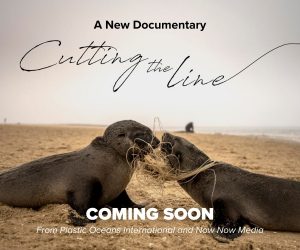Providing An Alternative Model for Local Commerce
There are few experiences which link individuals across history, continents and classes, quite like that of the itinerant, public market.
Whereas individual points of sale – buying, selling or bartering at a fixed point – have also been in evidence throughout history, what sets the experience of the market apart is the fact that it is necessarily a collective event. The only way markets exist and survive is if they engender a kind of happening, a drawing together of society at a particular point and place. Something you have to make a date for, organize yourself around. To shop at a market, you have to want to be a part of it, shed yourself to the collective.
Given all this, markets have a particular, unique ability to be about something more than commerce, to drive themselves forward with a value or a premise.
The Mercado Verde (Green Market) in Campeche – a founding member of Plastic Oceans International’s BlueCommunities program – is one such space.
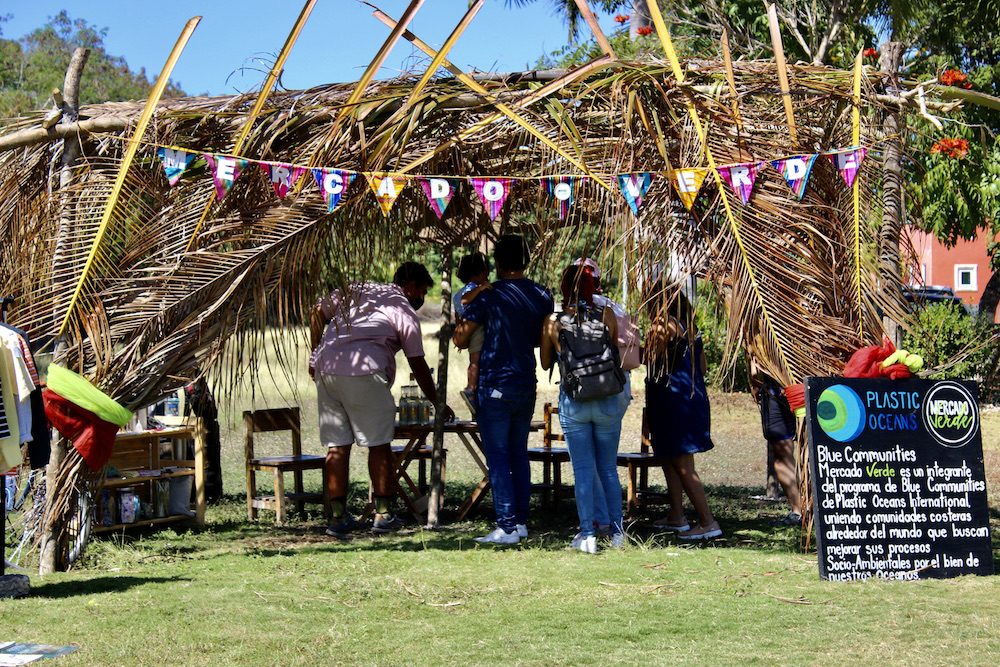
Visitors are welcomed as they arrive at the Green Market in Campeche.
“When you are at the Green Market, you know that you have arrived somewhere special,” said Tod Hardin, COO of Plastic Oceans International. “We embraced it because it goes well beyond just being about a shopping experience and profit margins. It is a place of unity, opportunity, inspiration, education and a true coming together of both the local community and visitors that come from afar. It provides us all a different model to consider.”
Now in its sixth year, the mercado began straightforwardly as a local response to helping small producers find a point of sale. In almost all cases the producers could not afford their own premises, and any shop which was interested in their produce offered prohibitive rates of purchase. Many producers also had other work during the week, or family responsibilities, so the only way forward was as a collective of like-minded individuals.
“We started small,” explains Laura Haw Pacheco, one of the founding organizers. “Eight or ten stalls spread out across a couple of rooms in a building in the historic center.”
“In the early days almost no one came,” continues Belynda Díaz, a producer who has been with the market since its inception. “We sold to each other and that was that. But even then, what we all felt was what a beautiful, collegiate atmosphere that was being generated among us … no devouring competition, but a genuine joy and celebration in each others’ successes.”
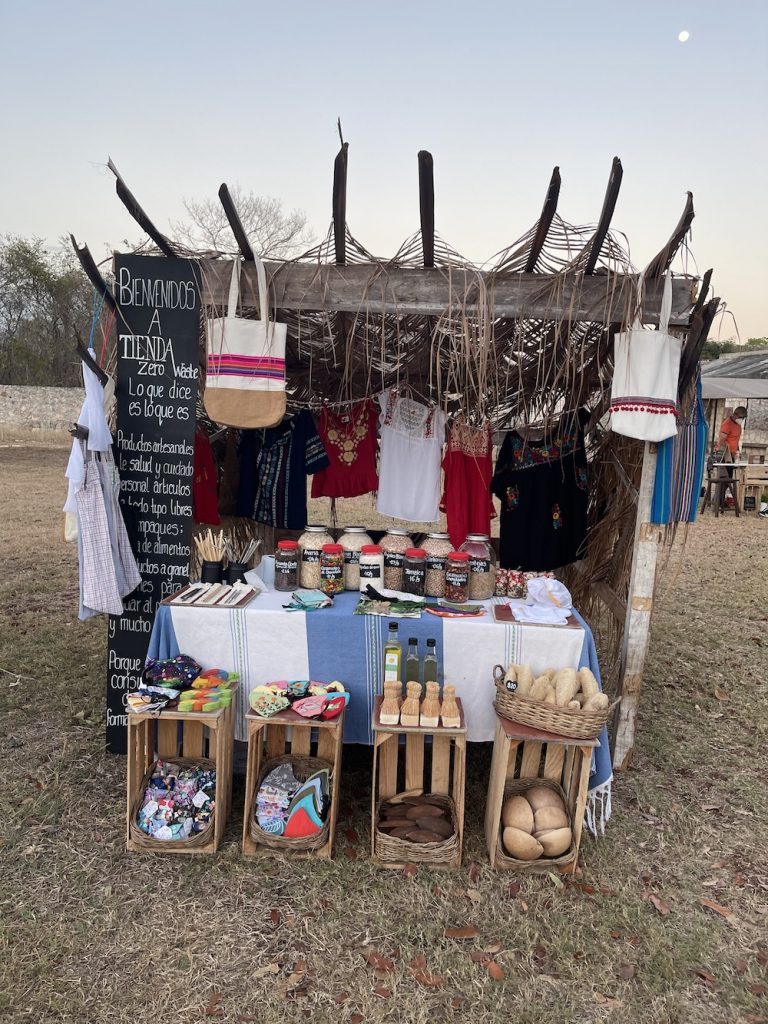
La Tienda Zero Waste stall at the Mercado Verde.
“At the start it was absolutely about giving local producers opportunities,” continues Haw Pacheco. “The ‘Green’ of the Market was in the produce, in the local, healthy, sustainable aspects inherent within offered products. But then we started to ask ourselves questions, difficult questions, about the inconsistencies in the rest of the market – and how we could genuinely make it holistically green.”
Highest among these was, of course, that greatest of modern afflictions: packaging.
Plastic packaging. Single-use plastic packaging.
“We knew we had to phase it out. But it’s not something you can do from one day to the other. So we did two key things: we made the problem about learning and growth, and gave ourselves a one year transition period to becoming zero plastic.”
In the first instance, the producers realized that there was a lot of development they needed to undertake personally, and professionally, and that rather than this being an impediment, it was in fact an opportunity for the stallholders to emotionally take their community with them on the journey towards eliminating waste.
“I sell reusable nappies and menstrual products,” says Díaz. “I order these – and inevitably they come wrapped in oodles and oodles of plastic. I didn’t know how I would be able to avert this, but then I had a conversation with the producer, and they understood. It was so straightforward. So much of change is just connecting, sharing concerns, hopes and fears, and working together. So we extended this conversation to our customers. Spoke openly, communicated complexities, listened. People really responded. It became a horizontal space where we all just tried to make things a little better each week, and gave ourselves the time to move forward, without judgement.”
Then came the transition. The goal was for the Green Market to be completely single-use plastic free by December 2018, giving producers and clients a year to gradually find solutions to ingrained problems of plastic usage, and get used to the changes.
“Our ice cream, for instance, was easy. We just phased out cups and only offered cones,” explains Don Eve, maker of vegan ice creams. “And I buy produce directly from the market in wooden boxes. For some others it was harder but gradually we introduced returnables, cooks designed food around the simplicity of rolls, we started a collection point for glass jars which could be sterilized to serve fruit waters. It was really about changing our way of thinking. Not giving yourself the easy option, and taking the public with you, continually talking about the values of the market, or why it was more than just a place to shop.”
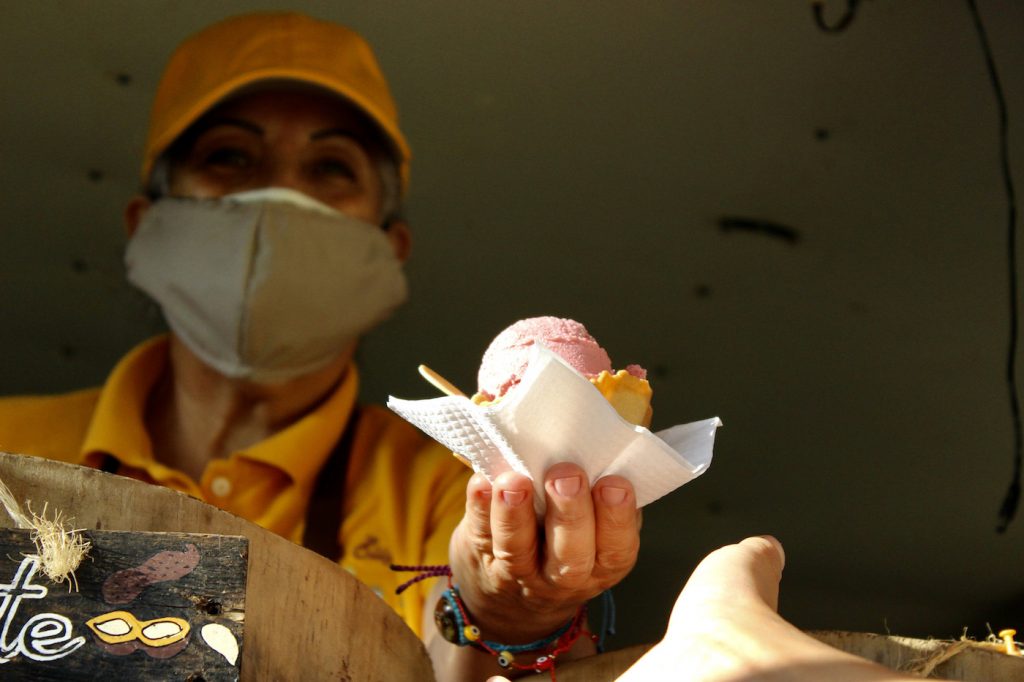
Alicia Corona presents the handmade vegan ice creams of Don Eve.
A way in which commerce can co-exist alongside community values.
Haw Pacheco furrows her brow when this point is made to her: “It sounds utopic, but how did we get so far away from that. Just purchasing for the sake of purchasing. Here there are items on sale, sure. But really this is a celebration of community, of strength, of aspirations, of resilience. It’s not about what you want to buy, but what we want for our society, and our environment.”
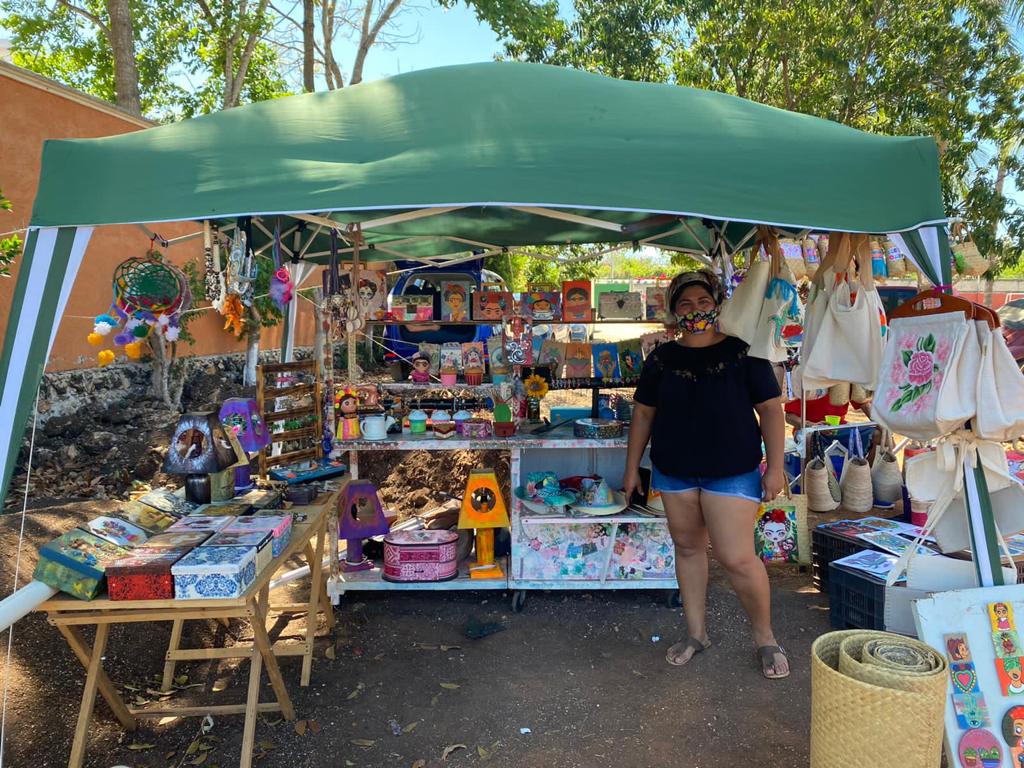
Kokiventa Navarro is a maker that offers her creative works at the Mercado Verde.
Mexico has a history of local markets, itinerant and fixed. In almost every case it is where products are freshest, in season, cheapest, sold by small-scale local producers.
Once unknown markets, such as Mercado el 100 in Mexico City, have now been running for ten years and have become a revered institution.
In Campeche, the Mercado Verde is deeply proud of its work, and its participation in the Plastic Oceans BlueCommunities family.
It is open every weekend of the year. To find out times and location visit https://m.facebook.com/mercadoverdecampeche
Jon Bonfiglio is a writer and journalist covering environment and news across Latin America for the likes of Talk Radio and Times Radio in the UK, as well as a variety of magazines and publications in the Americas.

